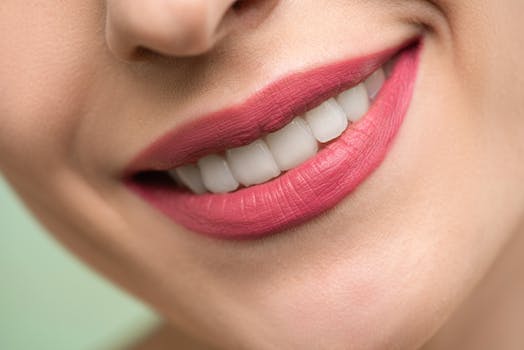-
Table of Contents
- Are Teeth Bones? – Exploring the Relationship Between Teeth and Bones
- Introduction
- Understanding Teeth and Bones
- Teeth
- Bones
- Are Teeth Considered Bones?
- Differences Between Teeth and Bones
- Common Misconceptions
- Teeth are Made of Bone
- Teeth are Dead Structures
- Conclusion
- Q&A
- 1. Can teeth be considered a type of bone?
- 2. Why are teeth harder than bones?
- 3. Do teeth have marrow like bones?
- 4. Can teeth heal like bones?
- 5. Are there any similarities between teeth and bones?

Introduction
Teeth and bones are two essential components of the human body, but are they the same? Many people often wonder if teeth are considered bones. In this article, we will delve into the topic and explore the relationship between teeth and bones. Through research, examples, case studies, and statistics, we aim to provide valuable insights to help you understand the nature of teeth and their distinction from bones.
Understanding Teeth and Bones
Before we dive into the question of whether teeth are bones, let’s first understand the basic structure and composition of both teeth and bones.
Teeth
Teeth are hard, calcified structures found in the mouth of humans and many other animals. They play a crucial role in biting, chewing, and speech. Each tooth consists of two main parts: the crown and the root.
- The crown is the visible part of the tooth above the gumline.
- The root is the part of the tooth that is embedded in the jawbone.
Teeth are primarily composed of dentin, a hard tissue that forms the bulk of the tooth structure. The outermost layer of the crown is covered by enamel, the hardest substance in the human body. The root is covered by cementum, a specialized bony substance that helps anchor the tooth to the jawbone.
Bones
Bones, on the other hand, are rigid organs that make up the skeletal system. They provide support, protection, and enable movement. Bones are composed of a dense outer layer called cortical bone and a spongy inner layer called trabecular bone. They contain living cells, blood vessels, and a matrix of collagen fibers and minerals, primarily calcium and phosphorus.
Are Teeth Considered Bones?
Now that we have a basic understanding of teeth and bones, let’s address the question: are teeth considered bones?
No, teeth are not classified as bones. Although both teeth and bones share some similarities in terms of their composition and mineral content, they serve different functions and have distinct structures.
Differences Between Teeth and Bones
Here are some key differences between teeth and bones:
- Function: Teeth are primarily involved in the mechanical breakdown of food during the process of digestion. They aid in biting, chewing, and speech. Bones, on the other hand, provide structural support, protect vital organs, and facilitate movement.
- Structure: Teeth have a different structure compared to bones. While bones have a complex internal structure with marrow cavities and various types of bone cells, teeth lack these features. Teeth are composed of dentin, enamel, and cementum, whereas bones consist of cortical and trabecular bone.
- Regeneration: Bones have the ability to regenerate and heal themselves, whereas teeth cannot regenerate. Once a tooth is damaged or lost, it cannot grow back naturally.
These differences clearly indicate that teeth and bones are distinct entities, despite some similarities in their composition.
Common Misconceptions
There are a few common misconceptions regarding the relationship between teeth and bones. Let’s address them:
Teeth are Made of Bone
While teeth and bones share some similarities, it is incorrect to say that teeth are made of bone. As mentioned earlier, teeth have a different structure and composition compared to bones. Teeth are primarily composed of dentin, enamel, and cementum, whereas bones are made up of cortical and trabecular bone.
Teeth are Dead Structures
Contrary to popular belief, teeth are not dead structures. Although teeth do not contain nerves or blood vessels like other living tissues, they are considered living organs. Teeth have living cells called odontoblasts present in the pulp chamber, which produce dentin throughout a person’s life.
Conclusion
In conclusion, teeth are not bones. While teeth and bones share some similarities in terms of their composition and mineral content, they serve different functions and have distinct structures. Teeth are involved in the mechanical breakdown of food, while bones provide support, protection, and enable movement. Understanding the differences between teeth and bones is crucial for maintaining good oral health and overall well-being.
Q&A
1. Can teeth be considered a type of bone?
No, teeth cannot be considered a type of bone. Although they share some similarities, teeth have a different structure and composition compared to bones.
2. Why are teeth harder than bones?
Teeth are harder than bones due to the presence of enamel, which is the hardest substance in the human body. Enamel protects the teeth from wear and tear during biting and chewing.
3. Do teeth have marrow like bones?
No, teeth do not have marrow like bones. Marrow is a soft, fatty tissue found inside bones, which is responsible for producing blood cells. Teeth lack this feature.
4. Can teeth heal like bones?
No, teeth cannot heal like bones. Once a tooth is damaged or lost, it cannot regenerate naturally. It is important to seek dental treatment for any tooth-related issues.
5. Are there any similarities between teeth and bones?
Yes, there are some similarities between teeth and bones. Both contain minerals, primarily calcium and phosphorus, which contribute to their hardness. Additionally, both teeth and bones are considered hard tissues in the human body.






